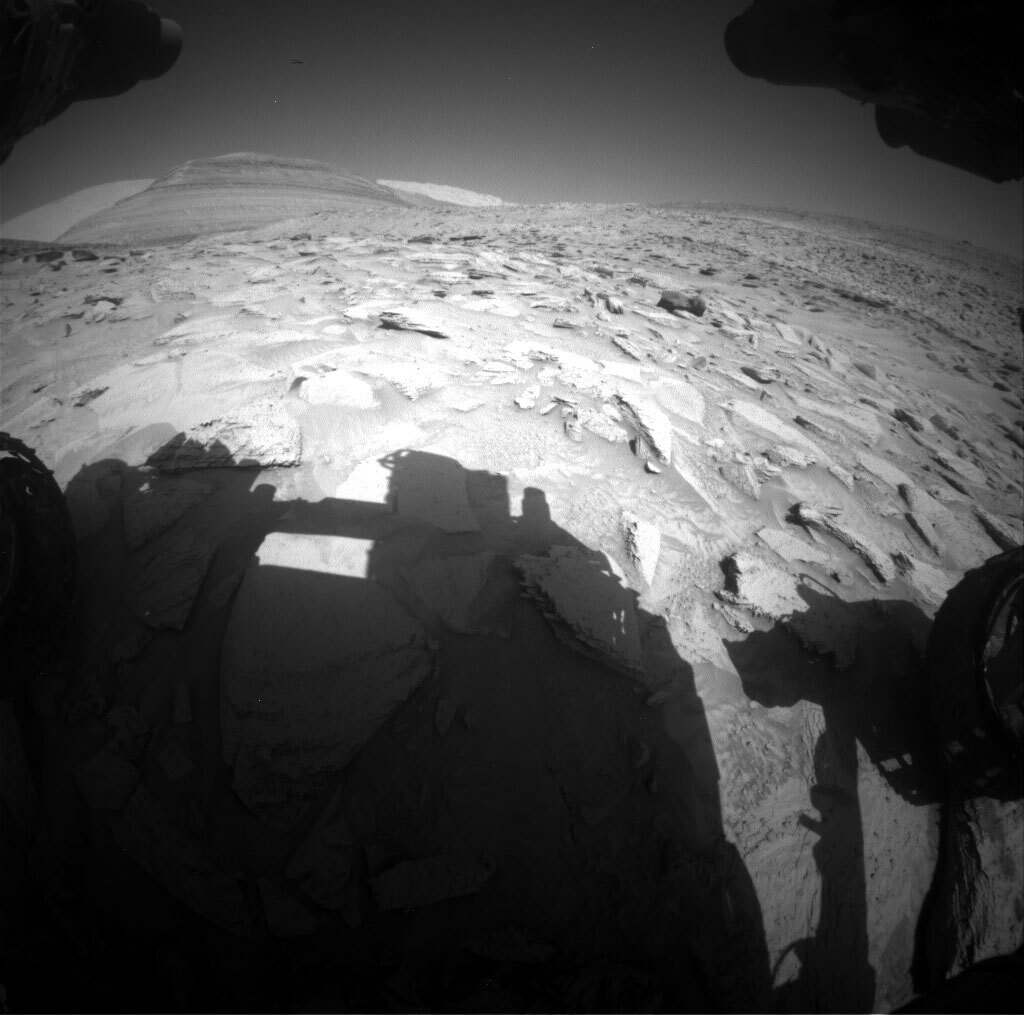2 min read

It always feels great to reach the top of a mountain, especially when the path was challenging. While the top of Mt. Sharp still looms above Curiosity, the team was very excited to see that in the last drive the rover successfully reached the top of the canyon that it has been climbing for the past few weeks. After the previous drive fell short of the top of the canyon in marker band valley, in the most recent plan Curiosity rose above the challenge of this terrain to reach the plateau above the canyon. And what a view! (See the front hazcam image displayed above.)
The workspace includes several interesting rocks, including the “Floresta” target which will be cleared of dust by the DRT and then observed by APXS, MAHLI, and Mastcam with a multispectral image. APXS and MAHLI will also target “Calama,” which is a rock that appears to have a dark coating on it. A dark toned float rock lies beyond the reach of the arm, so ChemCam will target it (“Ile Portal”) for a LIBS observation and Mastcam will take a corresponding image. A ChemCam RMI mosaic will document the structure and texture of contact between two units in the distance that were mapped from orbital images. Mastcam will also take several stereo observations, including at “Camopi” documenting dark rock textures and their relationship to underlying units, at “Limao” assessing rock textures, and at a location exhibiting interesting patterns in the rocks behind the rover.
The plan also includes coordinated ChemCam passive sky and APXS and SAM atmospheric observations. These measurements from three different instruments will be used together to constrain trace elements that are present in the martian atmosphere.
Written by Kristen Bennett, Planetary Geologist at USGS Astrogeology Science Center







